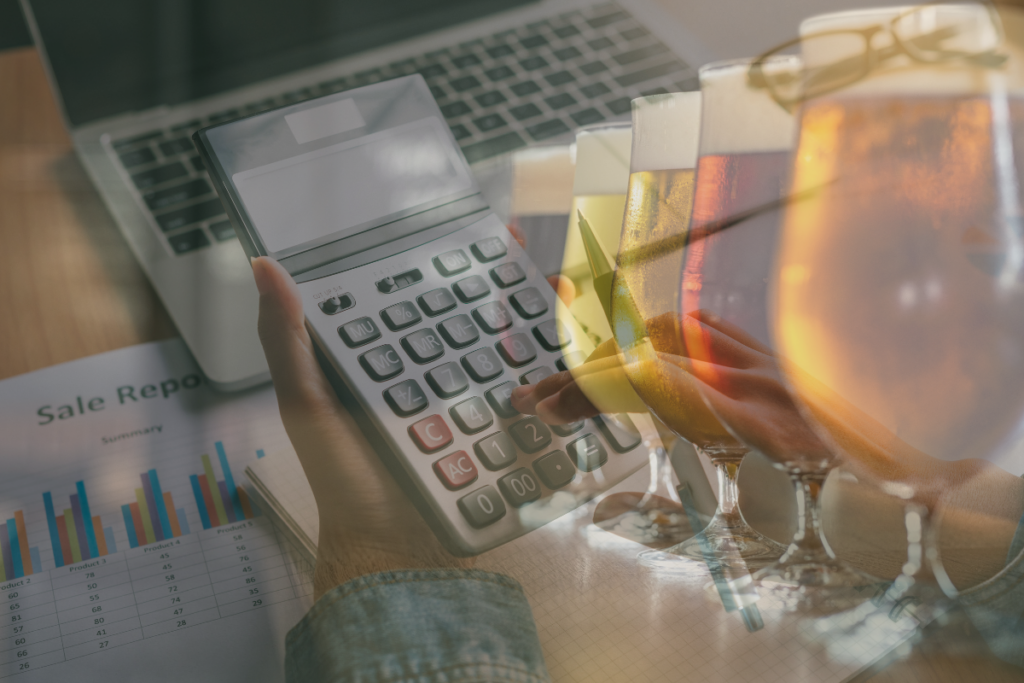We are recognised as authorities in our specialised fields. We publish newsletters with informed opinions that are free for you to subscribe to.
Financial numbers explained…with beer.
My passion as an accountant for small to medium-sized businesses is to “dumb down” accounting to each business owner so they can make informed, comfortable decisions about their business. Often, I hear the words, “I am working my backside off, and it feels like I am treading water, if not sinking”, or “Maybe I must go back and do a 9 – 5 job again”. Mostly, this is only the perception of my clients, and the facts based on their numbers paint a completely different picture.

When I meet my clients, mostly after a long day at work, we meet over coffee, beer, or a glass of wine. Mostly, we order a beer, and I start using the sale of beer to explain their numbers to make them more understandable.
Here are a few examples…
Income Statement or Profit and Loss Report
This report is used to determine your income (sales) made and expenses incurred in the process of making those sales. Taking it back to my beer analogy, the total number of sales is based on the number of beers sold.
The expenses would be the cost of, for example:
- what you pay to the brewery for each beer (cost of sales)
- salaries paid to the sales staff,
- rent,
- power bills, and
- petrol (for making deliveries) etc, monthly.
Subtracting all business expenses from your sales results in net profit before “drawings” and tax.
Balance Sheet Report
This report basically tells you what stuff your business owns, what it owes, and how much it’s all worth.
So, for assets, think about things like your delivery van that you use to get your beer to customers, the cash you’ve got sitting in your bank account, and any money that people owe you because they bought beer on credit.
Now, liabilities are what your business owes to others. This could include bills from your suppliers, like the brewery where you get your beer from, bills from your phone company, rent you owe your landlord, and even taxes to the government (like the IRD). Oh, and if you took out a loan to buy that delivery van, that’s part of it too.
Cash Flow Report
This report tells you how much money is coming into your business and how much is going out. It’s like keeping tabs on your cash flow. At the end of the day, the numbers in this report should match up with what’s left in your bank account. Like we always say, “Cash is king.”
In conclusion
There are various other tools we use as accountants, like ratios, etc, but I am not going to bore you with that jargon. My goal is to make sure you really get what’s going on with your business finances so you can make smart decisions.
Understanding your numbers means you can see if your sales are bringing in enough to cover your expenses and make the profit you want. It helps you figure out if you’re paying too much to suppliers, if your overhead costs like rent and salaries are in check, and where your profit is sitting.
Most importantly, knowing your numbers will give you a good indication of whether things are going good, or not, or somewhere in between. You can then explore what levers you may be able to pull, for example – can you increase your prices? Or negotiate with your suppliers? There are many different avenues that could be considered in order to get you where you want to go.
If you need help understanding your numbers, give me a call, and we can grab an ice-cold beer.
If you don’t know where to begin, want to talk through something, or have a specific question but are not sure who to address it to, fill in the form, and we’ll get back to you within two working days.
Find out about our team
Look through our articles
Read more about our history
Business Advisory Services
Tax Specialist Services
Value Added Services
Get in touch with our team
Want to ask a question?
What are your opening hours?
AML & CFT Act in New Zealand
Events with Gilligan Sheppard
Accounting software options
Where are you located?
Events

